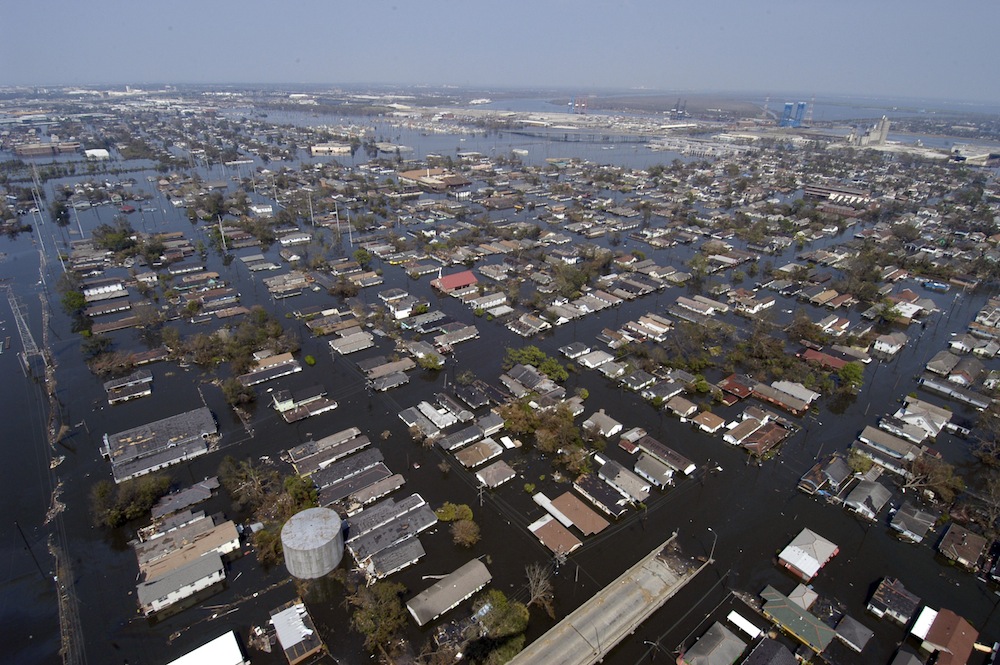New research by the Insurance Institute for Business & Home Safety (IBHS) indicates that stronger building standards and codes have contributed to stronger roofs in the Gulf Coast region.
In the 10 years after Katrina, Alabama, Louisiana and Mississippi, have also added tougher requirements for inspections, building permits, and contractor licensing. Combined with beefed up codes, this is good news for the resiliency of buildings in the region, IBHS says.
IBHS researchers examined changes specific to roofing requirements by evaluating and analyzing key aspects of roofing regulations, including codes, contractor licensing, permits, and inspections. Building codes have substantially improved, with 100% of surveyed jurisdictions currently enforcing either the 2012 or 2009 edition of the International Residential Code (IRC). Prior to Katrina, only about one-third (36%) of coastal communities surveyed were known to enforce the IRC.
In addition to enactment and enforcement of the latest building codes, IBHS recommendations for hurricane-exposed communities include adoption of IBHS FORTIFIED HomeTM–Hurricane superior roofing construction standards. These standards provide increased resilience through stronger construction techniques, and were specifically developed for these locations.
Related Stories
Codes and Standards | Oct 17, 2022
Ambitious state EV adoption goals put pressure on multifamily owners to provide chargers
California’s recently announced ban on the sale of new gas-powered vehicles starting in 2035—and New York’s recent decision to follow suit—are putting pressure on multifamily property owners to install charging stations for tenants.
| Oct 13, 2022
Boston’s proposed net-zero emissions code has developers concerned
Developers have raised serious concerns over a proposed new energy code by the City of Boston that would require newly constructed buildings over 20,000 sf to immediately hit net-zero emissions goals.
Building Team | Oct 12, 2022
Real estate development practices worsened impact of Hurricane Ian
A century ago, the southwest Florida coast was mostly swamps and shoals, prone to frequent flooding and almost impossible to navigate by boat.
Standards | Oct 11, 2022
Peter Templeton named new USGBC and GBCI president and CEO
The U.S. Green Building Council (USGBC) and Green Business Certification Inc. (GBCI) appointed Peter Templeton as president and CEO.
Legislation | Oct 10, 2022
Chicago’s updated building energy code provides incentives for smart HVAC, water appliances
The Chicago City Council recently passed the 2022 Chicago Energy Transformation Code that is intended to align with the city’s goal of reducing carbon emissions by 62% from 2017 levels by 2040.
Contractors | Oct 6, 2022
Modular construction gets boost from impacts of the pandemic
The impact of the Covid pandemic on the construction industry appears to be fueling demand for modular construction methods, especially in the western U.S. and Canada.
Fire and Life Safety | Oct 4, 2022
Fire safety considerations for cantilevered buildings
Bold cantilevered designs are prevalent today, as developers and architects strive to maximize space, views, and natural light in buildings. Cantilevered structures, however, present a host of challenges for building teams, according to José R. Rivera, PE, Associate Principal and Director of Plumbing and Fire Protection with Lilker.
Resiliency | Sep 30, 2022
Designing buildings for wildfire defensibility
Wold Architects and Engineers' Senior Planner Ryan Downs, AIA, talks about how to make structures and communities more fire-resistant.
| Sep 30, 2022
Lab-grown bricks offer potential low-carbon building material
A team of students at the University of Waterloo in Canada have developed a process to grow bricks using bacteria.
| Sep 27, 2022
New Buildings Institute released the Existing Building Decarbonization Code
New Buildings Institute (NBI) has released the Existing Building Decarbonization Code.

















